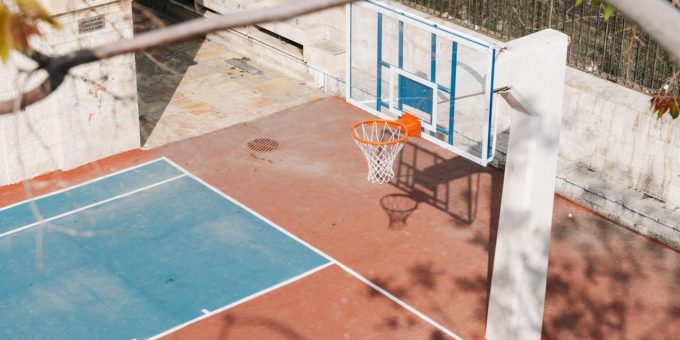
Ninja playground and fitness areas demand surfaces that endure high-impact fun while staying safe for little hands. When designers pair equipment with a sculptural corten planter box, they introduce earthy contrast that deserves equally thoughtful colour protection. Home renovators are also discovering that a breathable concrete sealer once reserved for driveways can lock pigments into outdoor murals without trapping moisture. These material combinations highlight why eco paints have become the secret weapon for modern, sustainable play spaces.
What Makes a Paint “Eco”?
An environmentally preferable coating ticks three core boxes: low toxicity, responsible sourcing, and full-life-cycle accountability. For playgrounds—where little fingers touch every surface—volatile organic compounds (VOCs) are the first ingredient under scrutiny. Modern water-borne acrylics have driven VOC levels below 5 g/L, far beneath Australia’s Paint Product Stewardship Scheme targets. Pigments come from recycled iron oxide or natural earths rather than heavy-metal dyes, and binders increasingly derive a portion of their resin from plant oils or bio-based polymers. Responsible brands also publish Environmental Product Declarations that quantify carbon footprint per litre and outline take-back schemes for empty pails.
Health and Safety: Kids First
Reducing airborne chemicals is only half the story. Young children explore the world by touch—and occasionally by taste—so coatings must be non-migratory once cured. Independent lab tests confirm that certified eco paints release no measurable phthalates or formaldehyde during abrasion, a common occurrence when scooters bump into timber edging. Slip resistance sits right alongside chemical safety. Fine silica additives or glass-bead textures can be mixed into final coats, achieving P4 or higher wet-pendulum ratings without resorting to coarse, skin-scratching grit. Finally, antimicrobial additives derived from silver ions or zinc pyrithione can inhibit mould on shaded equipment, reducing maintenance and allergy triggers.
Performance in Harsh Climates
Victoria’s playgrounds swing from 40 °C summer scorchers to frosty July mornings, demanding coatings that flex across a 60 °C temperature band. Silicone-modified elastomeric paints stretch up to 300 % without cracking, ideal for timber rails that expand and contract with humidity. UV absorbers—often sourced from titanium dioxide—slow fading, keeping vibrant blues and sunny yellows fresh for up to seven years before a top-up is required. For metal slides and climbing frames, zinc-rich primers provide galvanic protection beneath the colour coat, stopping rust at scratches caused by enthusiastic racing. Crucially, these high-performance additives sit within the paint matrix; they don’t leach into soil even under intense rain.
Colour Psychology and Creative Play
Hue selection for children’s environments goes beyond decoration; it shapes mood, engagement, and even motor-skill development. Warm reds and oranges energise active zones, while cooler greens encourage contemplation in quieter corners. Eco formulations now span more than 3 000 shades, including deep blacks once achievable only with carbon-heavy petroleum pigments. Designers often ground colour schemes in nature to foster biophilic connection: eucalyptus greens echo nearby bushland, while muted ochres reference native sandstone. Transparent stains also feature, revealing timber grain beneath a tinted protective veil—perfect for sustainability-minded councils keen to showcase responsibly sourced hardwood.
Application Best Practices
Even the cleanest coating can underperform if applied poorly. Contractors should schedule works during low-wind conditions to prevent overspray drifting into neighbouring gardens. Surfaces must be pressure-washed to remove chalking, then sanded lightly to ensure mechanical key—skipping these steps is the fastest way to blistered paint. Two thin coats outperform one thick layer by allowing water to evaporate fully between passes. Where multiple colours meet, low-tack tapes made from renewable paper minimise landfill and produce crisp lines without pulling up fresh film. Equipment posts and undersides deserve equal care; children see every hidden angle when crawling and climbing.
Longevity and Maintenance
A true eco approach values durability as much as low embodied carbon. Longer repaint cycles mean fewer resources used over the life of the structure. Quarterly inspections should look for chips on high-traffic edges; minor defects caught early can be sanded and spot-primed rather than requiring full resurfacing. Mild detergent and soft-bristle brushes will remove dirt without scratching the protective film. Where graffiti is a risk, a sacrificial wax layer can sit on top of colour coats; the wax dissolves under a warm-water pressure washer, taking ink with it and leaving underlying paint untouched.
Future Innovations
The next wave of sustainable coatings is already leaving the lab. Photocatalytic paints infused with nano-titania promise to break down airborne pollutants, literally turning climbing walls into miniature air purifiers. Thermochromic finishes, once a novelty, are being refined to shift hue once surfaces exceed 45 °C, visually warning carers that it’s too hot for children to slide. Researchers are also experimenting with algae-based binders that sequester carbon during manufacture. These advances suggest a future where paint not only protects play structures but actively improves environmental quality.
Case Study: Community Greenspace in Ballarat
A regional council recently refurbished a 900 m² neighbourhood playground, opting for plant-oil-based acrylics throughout. Prior to the upgrade, annual peeling required multiple touch-ups, adding transport emissions and labour costs. After two years with the new system, inspections record zero film breakdown despite hail events and record UV days. CO₂ e savings are estimated at 1.3 t compared with the previous solvent-rich alkyd catalogue, largely from reduced repaint frequency. Local parents also report that the subtle eucalyptus and sky-blue palette blends better with surrounding gum trees, making the playspace feel like an extension of the natural reserve.
Conclusion
Eco paints have evolved from niche products into mainstream solutions capable of withstanding harsh Australian conditions while safeguarding children’s health. By choosing low-VOC formulations, responsibly sourced pigments, and high-elasticity binders, councils and homeowners alike can create playgrounds that delight, endure, and tread lightly on the planet. Implementation requires more than opening a tin—it calls for careful surface prep, thoughtful colour strategy, and ongoing care—but the reward is a vibrant, safe environment where future ninja warriors, budding botanists, and chalk-drawing dreamers can play with confidence for years to come.




